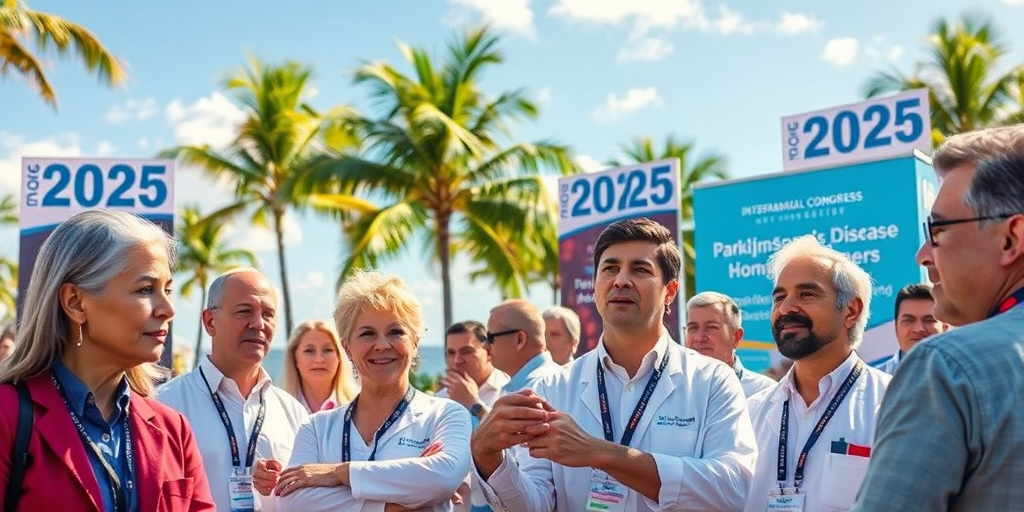**Rethinking Parkinson’s Clinical Trials: A Local Perspective on Inclusion and Diversity**
The recent discussion at the 2025 International Congress of Parkinson’s Disease and Movement Disorders (MDS) held in Honolulu shed light on the critical need to rethink inclusion criteria in Parkinson’s disease (PD) clinical trials. The focus of this congress, as underscored by Dr. Camille Carroll, a professor of clinical neuroscience at Newcastle University, was on enhancing trial generalizability and effectiveness through inclusive recruitment and precise patient selection.
**Understanding the Phases and Challenges**
Dr. Carroll emphasized the tailored approach required for each phase of clinical trials. In phase 1, the primary concern is safety, necessitating a narrower focus. Phase 2 trials target efficacy in homogeneous groups, while phase 3 trials aim to validate real-world benefits across diverse populations, a stage where inclusion becomes paramount.
Recent advances in targeting α-synuclein, mitochondrial dysfunction, and neuroinflammation are at the forefront of PD research. However, incorporating these breakthroughs into standard practice demands more flexible and inclusive trial designs that mirror real-world clinical settings and account for varied patient demographics to avoid confounding results.
**Local Impact: Bringing Inclusivity to the Rio Grande Valley**
For communities like the Rio Grande Valley (RGV), which is rich in diversity, the implications of this initiative are profound. Both researchers and patients within the RGV have a critical role in shaping and testing treatments that can affect vast patient populations.
John Gonzalez, a health advocate from the RGV and husband to a PD patient, highlighted, “The diversity in our community can provide invaluable insights into different PD presentations. We want our local population represented in trials, ensuring treatments are effective across all subgroups.”
**Community Resonance and Past Echoes**
Historically, the RGV has been underrepresented in major clinical studies, primarily due to restrictive eligibility criteria. This congress session, chaired by Dr. Susan Fox and Dr. Nobutaka Hattori, echoes the community’s long-held belief in the necessity of participatory research to address unique genetic, environmental, and lifestyle factors common in South Texas.
Maria Rodriguez, who leads a local PD support group, pointed out, “Our voices have often been left out of the research conversation. This shift towards inclusive trials acknowledges our community as an essential player in the medical narrative of PD.”
**Potential Impacts and Looking Ahead**
The embrace of diverse recruitment strategies in PD trials is expected to enhance therapeutic strategies and ensure safety across various socio-demographic groups. Success in this arena could serve as a model for inclusive research practices in other neurological disorders, profoundly impacting local communities and driving healthcare policy changes.
Dr. Carroll mentioned, “Expanding inclusion criteria is about more than just numbers. It’s about acknowledging and addressing the full spectrum of patient needs and ensuring that what works in the lab works in every consultation room.”
**Diverse Perspectives on Broader Implementation**
While the push for inclusivity is largely supported, it comes with logistical challenges. Critics argue that broader inclusion could complicate trial designs, potentially slowing down the recruitment process and increasing costs. However, advocates maintain that the long-term benefits, including the development of more universally effective treatments, outweigh these concerns.
The congress sessions didn’t just focus on PD but also explored other neurology areas like Alzheimer’s disease, indicating a broader trend towards inclusivity. Tools like new imaging agents and medications such as Apomorphine sublingual film were discussed, reflecting the shared goal of integrating comprehensive patient representation in neurology research.
**Local Resources and Further Engagement**
Residents and healthcare professionals interested in contributing or learning more about this evolving landscape are encouraged to engage with platforms like NeurologyLive. Subscriptions provide ongoing updates that deliver expert opinions and cutting-edge research directly to the community.
Furthermore, upcoming workshops organized through local hospitals and universities in the RGV will offer deeper dives into current PD research and its future trajectory, focusing on subject involvement from diverse demographic backgrounds.
In conclusion, the evolution of PD clinical trials towards inclusive and diverse study populations signifies a pivotal turn not only in research methodology but also in addressing community-specific healthcare needs. For the RGV and similar regions, it represents a beacon of hope—pointing towards an era of personalized and equitable medical advancements driven by the very communities they aim to serve.







